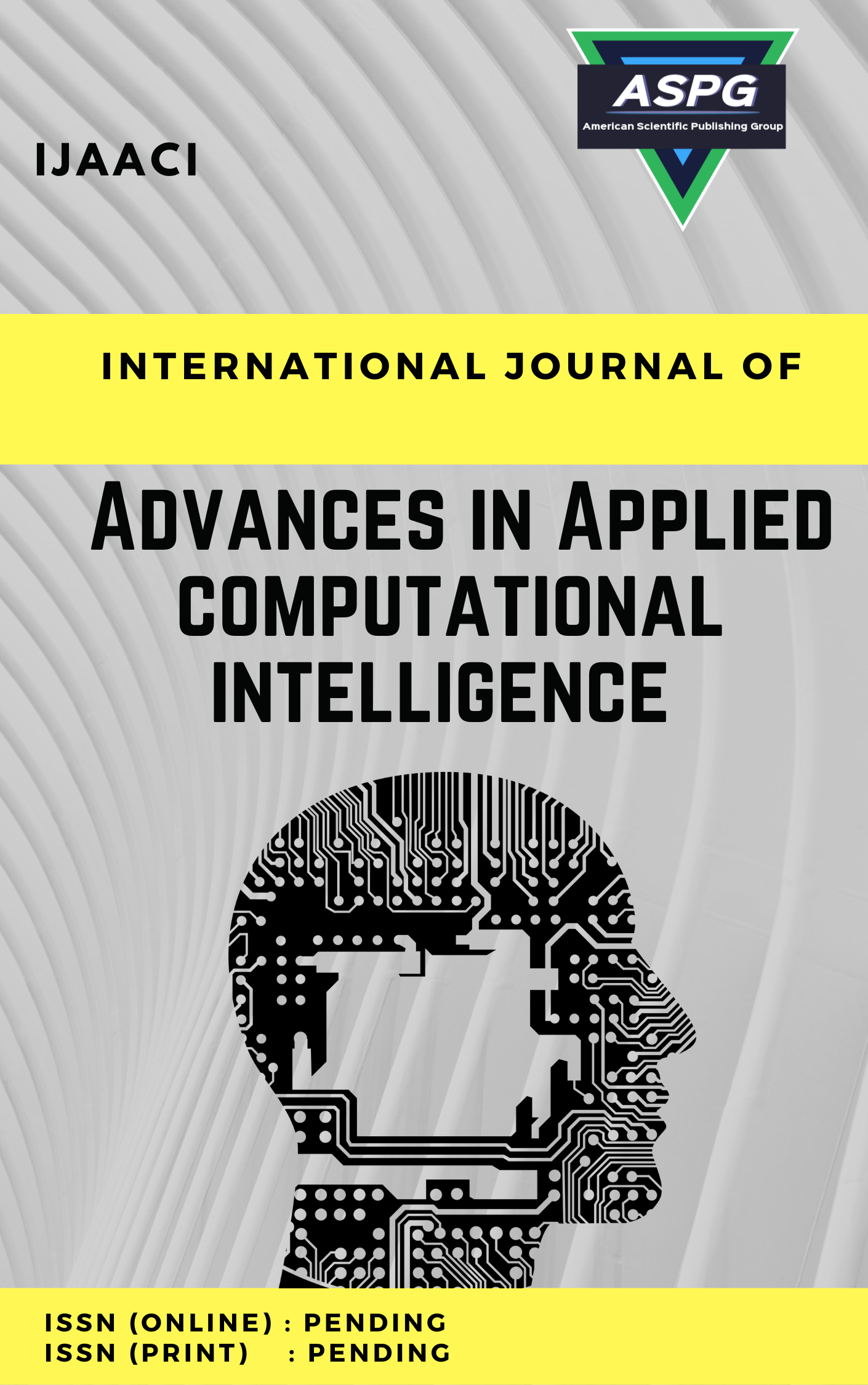

Volume 2 , Issue 2 , PP: 27-36, 2022 | Cite this article as | XML | Html | PDF | Full Length Article
Ahmed Abdelaziz 1 * , Alia N. Mahmoud Nova 2
Doi: https://doi.org/10.54216/IJAACI.020203
Adding car-sharing to existing public transit options is a great idea. However, finding the right location for a car-sharing station is difficult. The car-sharing station choice has many conflicting criteria, so the multi-criteria decision-making idea is used to deal with various conflict criteria. The process of choosing a suitable car-sharing station is containing vague and imprecise information. So, the neutrosophic set (NS) is used to overcome this problem. This paper introduced a framework consisting of the weighted aggregated sum product assessment (WASPAS) method with the NS. The WASPAS is an MCDM method. The WASPAS is used to compute the importance of criteria and the importance of alternatives. The WASPAS is a hybrid with interval-valued neutrosophic sets (IVNS). The suggested framework is applied to select car-sharing stations. This paper can help decision-makers in selecting the location to install a car sharing station.
WASPAS Method , Interval Valued Neutrosophic Set , Car Sharing , Site Selection , MCDM.
[1] M. Lin, C. Huang, and Z. Xu, “MULTIMOORA based MCDM model for site selection of car sharing station under picture fuzzy environment,” Sustain. cities Soc., vol. 53, p. 101873, 2020.
[2] M. Deveci, F. Canıtez, and I. Gökaşar, “WASPAS and TOPSIS based interval type-2 fuzzy MCDM method for a selection of a car sharing station,” Sustain. Cities Soc., vol. 41, pp. 777–791, 2018.
[3] D. Das, P. P. Kalbar, and N. R. Velaga, “Framework for comparative evaluation of car-sharing alternatives for urban and suburban regions: Case study of Mumbai, India,” J. Urban Plan. Dev., vol. 147, no. 3, p. 5021022, 2021.
[4] F. Ferrero, G. Perboli, M. Rosano, and A. Vesco, “Car-sharing services: An annotated review,” Sustain. Cities Soc., vol. 37, pp. 501–518, 2018.
[5] H. Becker, F. Ciari, and K. W. Axhausen, “Measuring the car ownership impact of free-floating car-sharing–A case study in Basel, Switzerland,” Transp. Res. Part D Transp. Environ., vol. 65, pp. 51–62, 2018.
[6] B. Boyacı, K. G. Zografos, and N. Geroliminis, “An optimization framework for the development of efficient one-way car-sharing systems,” Eur. J. Oper. Res., vol. 240, no. 3, pp. 718–733, 2015.
[7] S. Illgen and M. Höck, “Literature review of the vehicle relocation problem in one-way car sharing networks,” Transp. Res. Part B Methodol., vol. 120, pp. 193–204, 2019.
[8] R. Mounce and J. D. Nelson, “On the potential for one-way electric vehicle car-sharing in future mobility systems,” Transp. Res. Part A Policy Pract., vol. 120, pp. 17–30, 2019.
[9] R. F. F. Lemme, E. F. Arruda, and L. Bahiense, “Optimization model to assess electric vehicles as an alternative for fleet composition in station-based car sharing systems,” Transp. Res. Part D Transp. Environ., vol. 67, pp. 173–196, 2019.
[10] H. Becker, F. Ciari, and K. W. Axhausen, “Modeling free-floating car-sharing use in Switzerland: A spatial regression and conditional logit approach,” Transp. Res. Part C Emerg. Technol., vol. 81, pp. 286–299, 2017.
[11] J. Kopp, R. Gerike, and K. W. Axhausen, “Do sharing people behave differently? An empirical evaluation of the distinctive mobility patterns of free-floating car-sharing members,” Transportation (Amst)., vol. 42, pp. 449–469, 2015.
[12] R. Bausys, G. Kazakeviciute-Januskeviciene, F. Cavallaro, and A. Usovaite, “Algorithm selection for edge detection in satellite images by neutrosophic WASPAS method,” Sustainability, vol. 12, no. 2, p. 548, 2020.
[13] R. Semenas, R. Bausys, and E. K. Zavadskas, “A Novel Environment Exploration Strategy by m-generalised q-neutrosophic WASPAS,” Stud. Inform. Control, vol. 30, pp. 19–28, 2021.
[14] R. Bausys and G. Kazakeviciute-Januskeviciene, “Qualitative rating of lossy compression for aerial imagery by neutrosophic WASPAS method,” Symmetry (Basel)., vol. 13, no. 2, p. 273, 2021.
[15] P. Rani, J. Ali, R. Krishankumar, A. R. Mishra, F. Cavallaro, and K. S. Ravichandran, “An integrated single-valued neutrosophic combined compromise solution methodology for renewable energy resource selection problem,” Energies, vol. 14, no. 15, p. 4594, 2021.
[16] F. Kutlu Gundogdu and C. Kahraman, “Extension of WASPAS with spherical fuzzy sets,” Informatica, vol. 30, no. 2, pp. 269–292, 2019.
[17] E. Kazimieras Zavadskas, R. Baušys, and M. Lazauskas, “Sustainable assessment of alternative sites for the construction of a waste incineration plant by applying WASPAS method with single-valued neutrosophic set,” Sustainability, vol. 7, no. 12, pp. 15923–15936, 2015.
[18] A. R. Mishra, P. Rani, and R. S. Prajapati, “Multi-criteria weighted aggregated sum product assessment method for sustainable biomass crop selection problem using single-valued neutrosophic sets,” Appl. Soft Comput., vol. 113, p. 108038, 2021.
[19] R. Baušys and B. Juodagalvienė, “Garage location selection for residential house by WASPAS-SVNS method,” J. Civ. Eng. Manag., vol. 23, no. 3, pp. 421–429, 2017.
[20] Z. Morkunaite, R. Bausys, and E. Kazimieras Zavadskas, “Contractor selection for sgraffito decoration of cultural heritage buildings using the WASPAS-SVNS method,” Sustainability, vol. 11, no. 22, p. 6444, 2019.
[21] M. C. J. Anand and J. Bharatraj, “Interval-Valued Neutrosophic Numbers with WASPAS,” in Fuzzy Multi-criteria Decision-Making Using Neutrosophic Sets, Springer, 2018, pp. 435–453.
[22] R. Nie, J. Wang, and H. Zhang, “Solving solar-wind power station location problem using an extended weighted aggregated sum product assessment (WASPAS) technique with interval neutrosophic sets,” Symmetry (Basel)., vol. 9, no. 7, p. 106, 2017.
[23] R. Semenas and R. Bausys, “Modelling of autonomous search and rescue missions by interval-valued neutrosophic WASPAS framework,” Symmetry (Basel)., vol. 12, no. 1, p. 162, 2020.